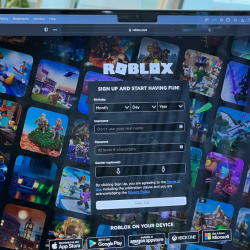Can a beloved franchise still be a source of hope independent of its problematic creator?
The world that once shaped your sense of wonder is alive.
Step inside Hogwarts Legacy, the Harry Potter RPG that topped Twitch’s charts days before its official release on February 10th. The game unveils a sumptuous, sprawling realm, packed full of side quests and secrets to unearth. Yet around every corner, the long shadow of J.K. Rowling looms.
Legacy is central to the controversy surrounding the game and the franchise at large. In recent years, Rowling’s fast become the world’s most famous TERF. She’s liked tweets that describe trans women as “men in dresses”, mocked “people who menstruate” and reaffirmed support for Maya Forstater, who was sacked for her own unapologetic bigotry. Rowling’s recent characters, including a male serial killer who cross-dresses (oh, and dons a burqa) to murder women, reinforce harmful stereotypes. In October, she protested legislation that would make it easier for trans people to change gender, claiming that trans women could “retain patterns of male criminality”.
The full timeline of Rowling’s rhetoric unmasks an unrelenting, unrepentant bigot. Someone who wields her enormous platform to push exclusionary ideas, and laughs about it over lunch with her new anti-trans mates. Her comments force fans to re-evaluate their relationship with a series they once found refuge in. Is it ethical to engage with Harry Potter? Can art be separated from the artist?
The Death of the Author is a 1967 essay by Roland Barthes that boils down to this: it’s not the writer who gives their work meaning, but the reader. “It is language which speaks, not the author,” and so, Barthes posits, the author’s intent, background and world views are irrelevant in interpreting the text.
In practice, this theory is nebulous
Thanks to social media, today’s creators often revise their oeuvre. Rowling herself is a retcon extraordinaire. She revealed Dumbledore was gay, implied we’d all assumed Hermione’s race and shoehorned other shallow attempts of diversity into the series after it concluded. Rowling’s also been heavily involved in the Wizarding World’s expansion. She writes the screenplays for spin-off series, Fantastic Beasts and Where to Find Them, and consulted on the development of the theme park and stage play, The Cursed Child. She’s penned plenty of new lore. And whilst the creators of Hogwarts Legacy have distanced themselves from her, the royalties she’ll receive from sales have led to cries to boycott the game entirely.
Of course we’d rather banish Rowling to some cupboard under the stairs and believe Britney Spears wrote the series instead. We can’t. It’s not only impossible, but irresponsible. Art is not made in a vacuum, and Harry Potter was never perfect. It’s limited to the lived experiences of a cisgendered, heterosexual white woman — and it shows. From Cho Chang, Harry’s Chinese love interest with two Korean surnames for a name, to the race of house-elves who enjoy enslavement. A racist, transphobic woman created these characters and we can’t change that. The goblin antagonists of Hogwarts Legacy have also reignited criticisms of Anti-Semitism, depicted in source material as “a secretive cabal of hooked-nose bankers.” Removing Rowling does not erase the story’s problematic subtext.
Instead, we MUST critically engage with art
Discovering that your favourite creator is capable of terrible things feels like a betrayal, but it doesn’t invalidate your experiences of their creations. Art is not perfect and neither are the people who make it. It is crucial to be critical of the things that you love. You can still love them and know that they are flawed.
The lightning-shaped mark that Harry Potter has left on the zeitgeist happens once in a lifetime. It inspired an entire new generation of readers; the books have been translated into 80 languages and sold around 600 million copies worldwide. The series offered a sanctuary for people of all races, genders and religions; it threw open its doors and said, “Hogwarts will always be there to welcome you home.” We can’t forget all the good that has come from a collective love of the boy wizard. The Harry Potter fandom remains a vibrant, active and accepting community. The most popular fansites do vast charity work, and Potter conventions and events provide fans with a safe space to meet like-minded people. Harry Potter is a cultural touchstone, not Rowling herself.
When art enters the public sphere, who does it belong to?
I believe that art exists to make us feel something. Whilst the magic is gone for many, Harry Potter remains a symbol of resilience and comfort for others. A vanguard of standing up for what is right, a friend when desperately needed. And as much as Rowling can reshape her work, we can too.
Through fan fiction, podcasts and art, talented fans correct the failings of source material and add nuance and diversity to its legacy every day. We must continue to critically examine the art we consume and let it inspire us to create better. In the end, it’s the readers who have made Harry Potter a true source of hope.
Featured image: Hogwarts Legacy / Xbox


































